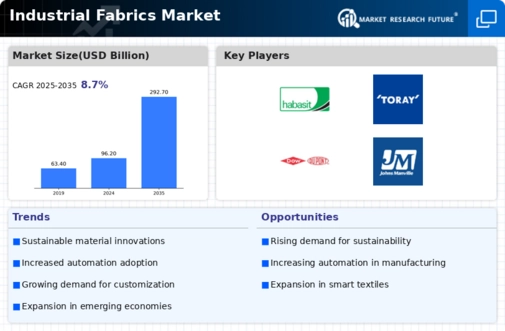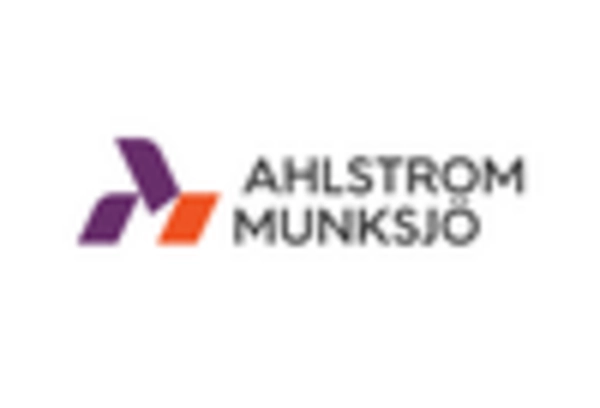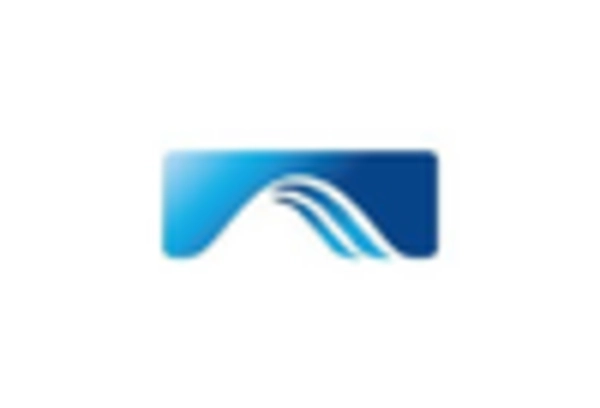-
Executive Summary
-
Scope of the Report
-
Market Definition
-
Scope of the Study
- Research Objectives
- Assumptions & Limitations
-
Markets Structure
-
Market Research Methodology
-
Research Process
-
Secondary Research
-
Primary Research
-
Forecast Model
-
Market Landscape
-
Supply Chain Analysis
- Raw Material Suppliers
- Manufacturers/Producers
- Distributors/Retailers/Wholesalers/E-Commerce
- End User
-
Porter’s Five Forces Analysis
- Threat of New Entrants
- Bargaining Power of Buyers
- Bargaining Power of Suppliers
- Threat of Substitutes
- Intensity of Competitive Rivalry
-
Market Dynamics of Global Industrial Fabrics Market
-
Introduction
-
Drivers
-
Restraints
-
Opportunities
-
Challenges
-
Trends/Technology
-
Global Industrial Fabrics Market, by Fiber Type
-
Introduction
-
Polyamide
- Market Estimates & Forecast, 2022–2030
- Market Estimates & Forecast, by Region, 2022–2030
-
Polyester
- Market Estimates & Forecast, 2022–2030
- Market Estimates & Forecast, by Region, 2022–2030
-
Aramid
- Market Estimates & Forecast, 2022–2030
- Market Estimates & Forecast, by Region, 2022–2030
-
Composite
- Market Estimates & Forecast, 2022–2030
- Market Estimates & Forecast, by Region, 2022–2030
-
Others
- Market Estimates & Forecast, 2022–2030
- Market Estimates & Forecast, by Region, 2022–2030
-
Global Industrial Fabrics Market, by Application
-
Introduction
-
Automotive Carpets
- Market Estimates & Forecast, 2022–2030
- Market Estimates & Forecast, by Region, 2022–2030
-
Conveyor Belts
- Market Estimates & Forecast, 2022–2030
- Market Estimates & Forecast, by Region, 2022–2030
-
Transmission Belts
- Market Estimates & Forecast, 2022–2030
- Market Estimates & Forecast, by Region, 2022–2030
-
Protective Apparel
- Market Estimates & Forecast, 2022–2030
- Market Estimates & Forecast, by Region, 2022–2030
-
Flame Resistant Apparel
- Market Estimates & Forecast, 2022–2030
- Market Estimates & Forecast, by Region, 2022–2030
-
Filter Media
- Market Estimates & Forecast, 2022–2030
- Market Estimates & Forecast, by Region, 2022–2030
-
Others
- Market Estimates & Forecast, 2022–2030
- Market Estimates & Forecast, by Region, 2022–2030
-
Global Industrial Fabrics Market, by Region
-
Introduction
-
North America
- Market Estimates & Forecast, 2022–2030
- Market Estimates & Forecast, by Fiber Type, 2022–2030
- Market Estimates & Forecast, by Application, 2022–2030
- US
- Canada
-
Europe
- Market Estimates & Forecast, 2022–2030
- Market Estimates & Forecast, by Fiber Type, 2022–2030
- Market Estimates & Forecast, by Application, 2022–2030
- Germany
- France
- Italy
- Spain
- UK
- Russia
- Poland
- Rest of Europe
-
Asia-Pacific
- Market Estimates & Forecast, 2022–2030
- Market Estimates & Forecast, by Fiber Type, 2022–2030
- Market Estimates & Forecast, by Application, 2022–2030
- China
- India
- Japan
- Australia & New Zealand
- Rest of Asia-Pacific
-
Middle East & Africa
- Market Estimates & Forecast, 2022–2030
- Market Estimates & Forecast, by Fiber Type, 2022–2030
- Market Estimates & Forecast, by Application, 2022–2030
- GCC
- Israel
- North Africa
- Turkey
- Rest of Middle East & Africa
-
Latin America
- Market Estimates & Forecast, 2022–2030
- Market Estimates & Forecast, by Fiber Type, 2022–2030
- Market Estimates & Forecast, by Application, 2022–2030
- Brazil
- Argentina
- Mexico
- Rest of Latin America
-
Company Landscape
-
Introduction
-
Market Strategy
-
Key Development Analysis (Expansion/Merger & Acquisitions/Joint Venture/New Product Development/Agreement/Investment)
-
Company Profiles
-
Forbo International SA
- Company Overview
- Financial Updates
- Product/Business Segment Overview
- Strategy
- Key Developments
- SWOT Analysis
-
Ahlstrom-Munksjö
- Company Overview
- Financial Updates
- Product/Business Segment Overview
- Strategy
- Key Developments
- SWOT Analysis
-
Habasit
- Company Overview
- Financial Updates
- Product/Business Segment Overview
- Strategy
- Key Developments
- SWOT Analysis
-
TORAY INDUSTRIES, INC.
- Company Overview
- Financial Updates
- Product/Business Segment Overview
- Strategy
- Key Developments
- SWOT Analysis
-
ContiTech AG
- Company Overview
- Financial Updates
- Product/Business Segment Overview
- Strategy
- Key Developments
- SWOT Analysis
-
Cerex Advanced Fabrics, Inc.
- Company Overview
- Financial Updates
- Product/Business Segment Overview
- Strategy
- Key Developments
- SWOT Analysis
-
W. Barnet GmbH & Co. KG
- Company Overview
- Financial Updates
- Product/Business Segment Overview
- Strategy
- Key Developments
- SWOT Analysis
-
DowDuPont
- Company Overview
- Financial Updates
- Product/Business Segment Overview
- Strategy
- Key Developments
- SWOT Analysis
-
Johns Manville
- Company Overview
- Financial Updates
- Product/Business Segment Overview
- Strategy
- Key Developments
- SWOT Analysis
-
Fitesa SA
- Company Overview
- Financial Updates
- Product/Business Segment Overview
- Strategy
- Key Developments
- SWOT Analysis
-
Conclusion
-
LIST OF TABLES
-
Global Industrial Fabrics Market: by Region, 2022–2030
-
North America: Industrial Fabrics Market, by Country, 2022–2030
-
Europe: Industrial Fabrics Market, by Country, 2022–2030
-
Asia-Pacific: Industrial Fabrics Market. by Country, 2022–2030
-
Middle East & Africa: Industrial Fabrics Market, by Country, 2022–2030
-
Latin America: Industrial Fabrics Market, by Country, 2022–2030
-
Global Industrial Fabrics Fiber Type Market, by Regions, 2022–2030
-
North America: Industrial Fabrics Fiber Type Market, by Country, 2022–2030
-
Europe: Industrial Fabrics Fiber Type Market, by Country, 2022–2030
-
Table10 Asia-Pacific: Industrial Fabrics Fiber Type Market, by Country, 2022–2030
-
Table11 Middle East & Africa: Industrial Fabrics Fiber Type Market, by Country, 2022–2030
-
Table12 Latin America: Industrial Fabrics Fiber Type Market, by Country, 2022–2030
-
Global Industrial Fabrics Application Market, by Regions, 2022–2030
-
Table14 North America: Industrial Fabrics Application Market, by Country, 2022–2030
-
Table15 Europe: Industrial Fabrics Application Market, by Country, 2022–2030
-
Table16 Asia-Pacific: Industrial Fabrics Application Market, by Country, 2022–2030
-
Table17 Middle East & Africa: Industrial Fabrics Application Market, by Country, 2022–2030
-
Table18 Latin America: Industrial Fabrics by Application Market, by Country, 2016-2023
-
Table19 Global Fiber Type Market, by Region, 2022–2030
-
Table20 Global Application Market, by Region, 2022–2030
-
Table21 North America: Industrial Fabrics Market, by Country, 2022–2030
-
Table22 North America: Industrial Fabrics Market, by Fiber Type, 2022–2030
-
Table23 North America: Industrial Fabrics Market, by Application, 2022–2030
-
Table24 Europe: Industrial Fabrics Market, by Country, 2022–2030
-
Table25 Europe: Industrial Fabrics Market, by Fiber Type, 2022–2030
-
Table26 Europe: Industrial Fabrics Market, by Application, 2022–2030
-
Table27 Asia-Pacific: Industrial Fabrics Market, by Country, 2022–2030
-
Table28 Asia-Pacific: Industrial Fabrics Market, by Fiber Type, 2022–2030
-
Table29 Asia-Pacific: Industrial Fabrics Market, by Application, 2022–2030
-
Table30 Middle East & Africa: Industrial Fabrics Market, by Country, 2022–2030
-
Table31 Middle East & Africa: Industrial Fabrics Market, by Fiber Type, 2022–2030
-
Table32 Middle East & Africa: Industrial Fabrics Market, by Application, 2022–2030
-
Table33 Latin America: Industrial Fabrics Market, by Country, 2022–2030
-
Table34 Latin America: Industrial Fabrics Market, by Fiber Type, 2022–2030
-
Table35 Latin America: Industrial Fabrics Market, by Application, 2022–2030
-
LIST OF FIGURES
-
Global Industrial Fabrics Market Segmentation
-
Forecast Research Methodology
-
Porter’s Five Forces Analysis of Global Industrial Fabrics Market
-
Value Chain of Global Industrial Fabrics Market
-
Share of Global Industrial Fabrics Market in 2020, by Country
-
Global Industrial Fabrics Market, 2022–2030,
-
Global Industrial Fabrics Market Size, by Fiber Type, 2020
-
Share of Global Industrial Fabrics Market, by Fiber Type, 2022–2030
-
Global Industrial Fabrics Market Size, by Application, 2020
-
FIGURE10 Share of Global Industrial Fabrics Market, by Application, 2022–2030

















Leave a Comment